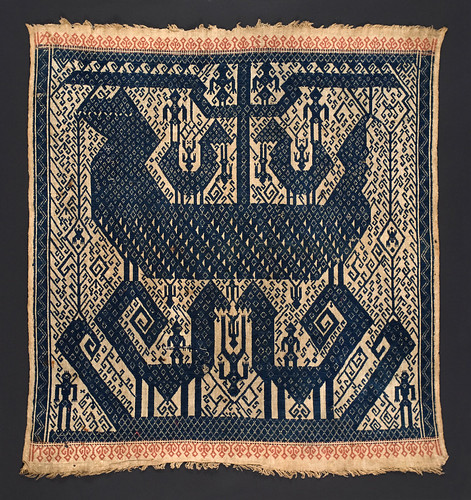 |
| Tampan, Paminggir people. Lampung region of Sumatra, 19th century, 76 x 70 cm. From the library of Darwin Sjamsudin, Jakarta. Photograph by D Dunlop. |
We are more aware of some sensations than others. It is difficult to say exactly what makes us more or less conscious of a perception. But let us call this quality of awareness the sensory magnitude and try to be more definite about it by mulling over the following thought experiment. First select some sensation and call it the calorimetric reference sensation. Mathematically represent it using a positive number noted by kC . Compare this calorimetric reference sensation with the Anaxagorean sensation associated with seed Z. Determine the numbers a and b such that perceiving a copies of the calorimetric reference presents the same sensory magnitude as experiencing b copies of Z. Report the result as
$\begin{align} \hat{E} \left( \sf{Z} \right) \equiv \frac { \it{a} } { \it{b} } \it k_{C} \end{align}$
The number $\hat{E}$ is called the specific energy of the seed Z. It is always greater than zero because a, b and kC are all positive numbers. Thus specific energy is fundamentally understood as a ratio of sensationsSo to understand physics we must consider more than just physics. And that is why WikiMechanics is illustrated with quantized ethnographic art. Moreover definite numerical values are not assigned to $\hat{E}$. Instead, over the next few pages we use the results of calibrated laboratory experiments to develop the idea of specific energy into an account of internal energy.
Here is a link to the most recent version of this content, including the full text.
| Size |
| Summary |
| Adjective | Definition | |
| Specific Energy | $\begin{align} \hat{E} \left( \sf{Z} \right) \equiv \frac { \it{a} } { \it{b} } \it k_{C} \end{align}$ | 4-4 |
